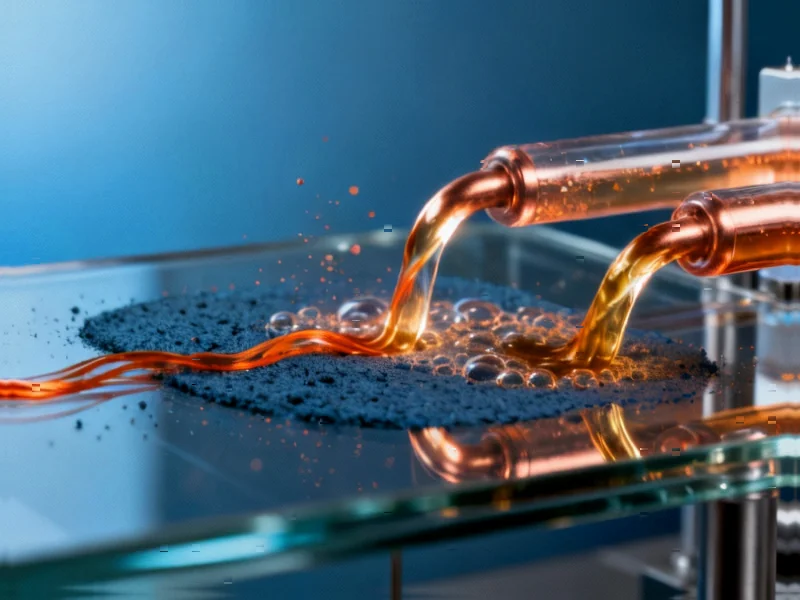Breakthrough in Sustainable Chemical Manufacturing
Researchers have reportedly developed a straightforward method to significantly improve the efficiency of electrochemical processes for sustainable chemical production, according to findings published in Nature Sustainability. The innovation addresses a major challenge in industrial electrochemistry where competing reactions typically reduce efficiency at high production rates.
Table of Contents
Overcoming Industrial-Scale Limitations
Sources indicate that the integration of value-added electrochemical oxidation with hydrogen evolution presents a promising sustainable route for both hydrogen energy and electrochemical refining. However, analysts suggest that the serious competition from oxygen evolution reaction (OER) with targeted oxidation reactions at high current densities has historically formed a substantial hurdle for industrial application.
The report states that this new approach introduces a trace amount of copper into the electrolyte to inhibit the OER side reaction specifically for glycerol oxidation reaction (GOR). This simple modification reportedly enables improved Faradaic efficiency of glycerol conversion to formic acid from 62.2% without copper addition to 99.3% at a high current density of 800 mA cm⁻².
Mechanism Behind the Efficiency Boost
According to the research team’s findings, the underlying mechanism involves a reversible redox process of copper that fully suppresses the formation of OER-active-phase hydroxy peroxide on the surface of GOR-active cobalt oxide catalyst. This suppression allows the desired glycerol oxidation to proceed with minimal energy waste to competing reactions.
The report states that this represents a significant advancement in electrochemical processing, as maintaining high efficiency at industrial-level current densities has been a persistent challenge in the field.
Broader Applications and Implications
Analysts suggest the current strategy also applies to other important electrochemical oxidation reactions, potentially paving the way for developing efficient non-OER electrochemical oxidation reactions for various chemical conversion processes. The approach could transform how glycerol and similar compounds are processed in sustainable chemical manufacturing.
Industry observers note that this development comes at a crucial time when sustainable hydrogen fuel production and green chemical manufacturing are gaining increased attention. The ability to simultaneously produce valuable chemicals and hydrogen with high efficiency could significantly improve the economics of renewable energy systems.
Future Prospects for Industrial Adoption
According to reports, the method’s simplicity and effectiveness at industrial-scale current densities suggest strong potential for commercial implementation. The research demonstrates that minor modifications to existing electrochemical processes can yield substantial improvements in efficiency and product selectivity.
Sources indicate that further development of this approach could enable more cost-effective production of sustainable chemicals and hydrogen, contributing to the growth of the electrochemical refinery industry while supporting global sustainability goals.
Related Articles You May Find Interesting
- Lette AI Secures $1.4M to Revolutionize Property Management with Agentic AI Plat
- Anthropic launches Claude coding capabilities on the web
- Tinder’s Startup-Style Overhaul Aims to Reclaim Gen Z Dating Crown
- Mobian Trixie Emerges as Mainline Linux Contender for Mobile Devices
- Hyperscale Leasing Frenzy: Q3 2025 Data Center Demand Shatters Records as AI Gia
References & Further Reading
This article draws from multiple authoritative sources. For more information, please consult:
- http://en.wikipedia.org/wiki/Current_density
- http://en.wikipedia.org/wiki/Glycerol
- http://en.wikipedia.org/wiki/Electrochemistry
- http://en.wikipedia.org/wiki/Redox
- http://en.wikipedia.org/wiki/Hydrogen_fuel
This article aggregates information from publicly available sources. All trademarks and copyrights belong to their respective owners.
Note: Featured image is for illustrative purposes only and does not represent any specific product, service, or entity mentioned in this article.



